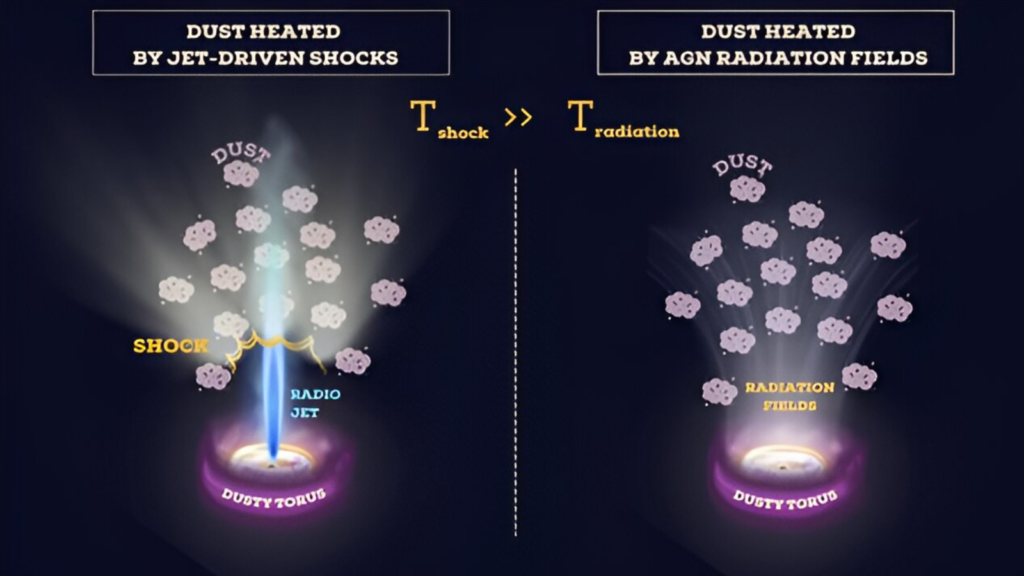The James Webb Space Telescope has made another significant discovery in the galaxy ESO 428-G14, situated about 70 million light-years away, revealing a hidden layer of dust around a supermassive black hole.
This research, led by a global team of scientists including Newcastle University’s Ph.D. student Houda Haidar, found that the energy heating this dust originates from high-speed gas collisions or “shocks,” rather than from the black hole’s radiation, as previously thought. This study, published in the *Monthly Notices of the Royal Astronomical Society*, indicates that the dust is primarily shaped and heated by relativistic jets—intense streams of particles ejected from the black hole’s poles.
The study challenges the traditional understanding that black hole accretion disks are the main sources of heat, suggesting instead that these jets play a very important role. JWST’s advanced infrared capabilities were key in observing these phenomena, as they can penetrate the dense clouds of dust and gas that typically obscure such regions.
David Rosario, a senior lecturer at Newcastle University and co-author of the study, expressed surprise at the jets’ significant impact on their surroundings, highlighting that this was an unexpected aspect of how active galactic nuclei (AGN) transfer energy.

This discovery is part of the Galactic Activity, Torus, and Outflow Survey (GATOS), emphasizing the importance of ongoing observation and research to uncover further cosmic mysteries and highlights the complexities involved in the interactions between black holes and the galaxies they inhabit, suggesting that jets, rather than radiation alone, can have a profound impact on heating and structuring the nearby dust.
These jets, which are streams of particles propelled at high velocities from the poles of the black hole, interact with the surrounding material in ways that were previously underestimated. This process involves more than just the direct impact of particles; it also includes the dynamics of shock waves, which are rapid, high-energy interactions that transfer heat and momentum to the dust and gas in the vicinity.
Moreover, this study serves as a testament to the capabilities of JWST’s instrumentation, particularly its infrared sensors that allow astronomers to see through dense regions of dust and gas that would otherwise be opaque,also help us learn more about how big black holes influence the galaxies they live in. Understanding this relationship is key to learning more about how galaxies change over time and could help answer big questions about how the universe works and its future.

















